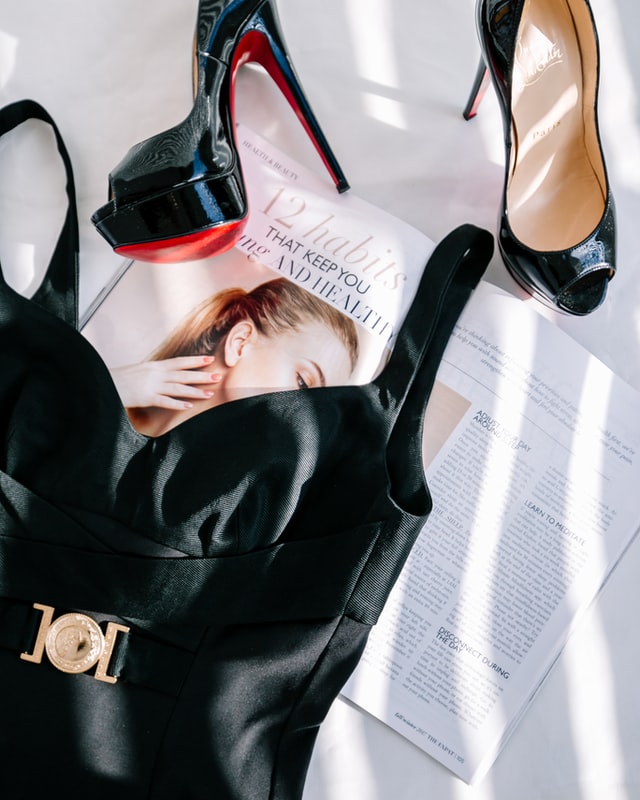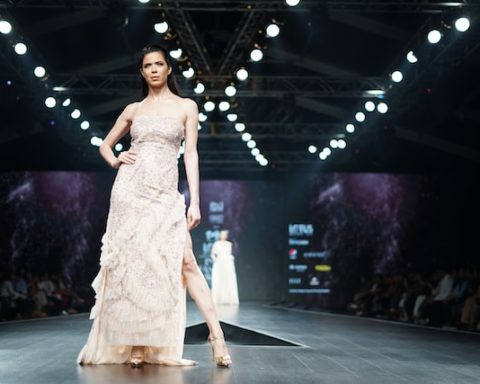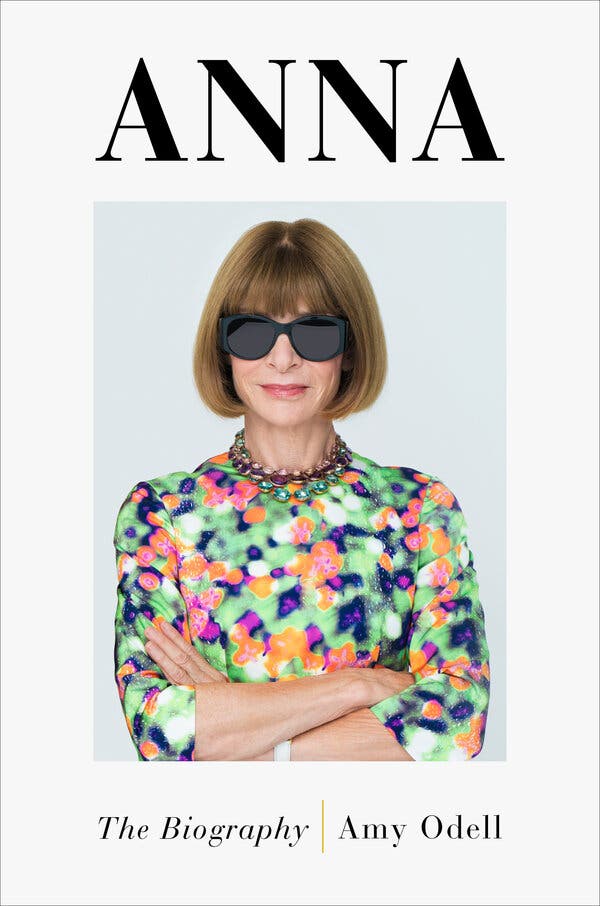
With the proliferation of fashion bloggers in the late-2000s and, more recently, the proliferation of social media influencers, one could be forgiven for wondering what the continued use of the fashion journalist is. But that would be a short-sighted way to view fashion journalism – and it would betray a poor understanding of what fashion journalists do (or, at least, what they’re supposed to do).
There are two primary reasons that content exists: to educate and to entertain. Most other forms of content, such as inspiring content, fall somewhere between those two. Journalism, at its best, does a masterful job of educating the consumer while not creating work that is too dry for the average person. This is what Manic Metallic aims to do. The goal, then, is to not compromise on quality by focusing too much on quantity and on entertaining the consumer.
If we want entertainment, we need look no further than the fashion entertainers that have popped up on social media over the past few years (there is no need to name specific entertainers; we’re not interested in mudslinging for the sake of it). Many of these types of accounts frequently post fashion memes and videos where the humor elicits a swift response from the consumer, resulting in a large amount of followers and engagement. This can mislead some into believing that these entertainers have a vast amount of fashion knowledge.
And, to be fair, a few of them do have knowledge that they use to get their fans engaged with their work. Some TikTokers are particularly adept at creating explainer videos educating viewers on everything from fashion history to the significance of Gucci’s latest collection. But therein lies the rub: the vast majority of content released into the world by fashion entertainers is in the form of social media posting on various platforms – memes, videos that range from 0:15 to 3:00 minutes long, 280 (but often shorter) character statements (unless you string together multiple into a thread, which doesn’t happen very often with respect to fashion tweets), stories, etc.
Where is the depth?
Enter the fashion journalist. Fashion journalists may or may not have journalism degrees, but what they do often have is a deep and abiding comprehension of their subject matter and a desire to display that knowledge in a coherent manner.
Or do they?

It depends on where one looks for fashion journalists. If you’re looking at Vogue, Elle, and other mainstream fashion magazines, then you’re not likely to find that intellectual depth and rigor for reasons that are not really a secret to those familiar with the industry. One cannot go to bed with advertisers and come up with good journalism. Besides, journalists at these outlets are afraid of being unwelcome at the fashion shows & presentations of the designers that they would be prospectively critiquing. And, with fashion weeks cosplaying as Mean Girls at least twice a year – separating the wheat from the chaff, so to speak – these journalists must make fashion week appearances. And they must maintain cordial relationships with their advertising partners, lest they lose a massive source of funding for their enterprises.
It’s much easier for fashion journalists that work at outlets such as Business of Fashion, WWD, The New York Times, and The Washington Post – along with those that choose to remain independent fashion media entities, such as Manic Metallic – to maintain a sense of autonomy from fashion designers and large conglomerates because the aforementioned companies do not necessarily depend on advertisement for such a large share of their revenue. Upsetting a designer or a brand with an unfavorable (but fair, of course) review for that season’s collection does not have to be a worry that crosses any of those journalists’ minds.
And this results in much more quality journalism – written, video, or otherwise – that educates the consumer while keeping their attention.
Fashion entertainers might claim that they are not beholden to designers and brands (i.e, advertisers) either, giving them an unparalleled advantage to be able to create content that is always truthful and that doesn’t skate around a mediocre collection with niceties. What some of them must understand, however, is that there’s a difference between constructive criticism for a designer and calling someone’s creations ‘fugly’ (a contraction of f***ing ugly, for the uninitiated).
What, then, of other fashion conversations not specifically involving a collection or fashion history? What if there’s a conversation about diversity, sustainability, fashion technology, mergers and acquisitions, retailers, and any of the other host of topics that make up the broader fashion discussion? Topics that cannot be summed up in a short explainer video, in other words. These are subjects that require a much closer examination, much more research, and much more substance from anyone hoping to contribute meaningfully to the conversation. A 1-minute video simply will not do.
Unless, of course, that is what the reading and viewing public demands of us now. Attention spans of the general public are supposedly frustratingly low, so perhaps the fashion entertainers are simply giving the crowds what they want. I happen to believe that, while there are some that have no desire to sit through a long video, article, or podcast episode, many that I’ve spoken with in Manic Metallic’s audience – and many that follow other fashion sources – find themselves craving substance in the fashion journalism that they read.
And to use the excuse that the public has the attention span of a goldfish is an insult to the public. Are we to believe that the consumer does not have the willingness or the intelligence to keep up with us journalists and our long fashion missives – so we will instead give them yet another article about the ‘25 best summer dresses to purchase before the season is over’? Again, it is an insult to the many people out there craving fashion journalists that are willing to engage in journalism within the profession that is in-depth, thoughtful, and truthful.

What about the often-mentioned pressure of the content cycle? Before the days of the Internet, most fashion journalists only needed to worry about the print news cycles of monthly magazines and daily print newspapers (to which the journalist wouldn’t be sending daily articles to print). In this era, we’re looking at outlets that put out content multiple times per day. There is a zero percent chance that quality journalistic pieces can be put out like products on a conveyor belt. The only way that this type of journalism happens is through these means: watered-down quality and a shoddy product.
That’s why the consumer sees so many articles rounding up 20 dresses for them to buy or 15 must-have bags to wear with a trench coat (coupled, of course, with the fact that these “articles” are very often littered with affiliate links designed to bring in profit for these media outlets. While there is nothing wrong with making a profit, consistently producing articles with lists of items for viewers and readers to purchase is questionable). Articles about figures that are either in the industry or are industry-adjacent – but are more often than not celebrities – wearing outfits to events are also popular. There is no deeper meaning to the article, and that’s the point. It is easier and quicker to produce – and people like celebrities and nepotism models, so it’s a win-win. Plus, some of these articles can be entertaining.
And this is one area where fashion journalists are failing. In veering too far to the ‘entertainment’ side of the content spectrum, you lose the balance of also educating the consumer. And, truthfully, why do fashion journalists exist if what we are putting out is not teaching the consumer something new? Another advantage that the journalist has over the entertainer is the level of nuance that journalists bring to their work. Fashion journalists have the opportunity to bring their wealth of knowledge and their talent for illuminating the happenings of the fashion industry to the masses. After all, anyone can look at photos that designers post online of their collections and say whether or not they like the collection. And anyone can talk about why they hate the latest cover of British Vogue. What fashion journalists offer is the ability to expound upon their ideas with an intelligent “Why?”. In fact, journalists know how to smartly construct any work that they put out with the 5 W’s and 1 H: how, what, who, when, where, and why. This is what journalists bring to the table.
What fashion journalists should not do, however, is try to compete with fashion entertainers on their own turf. On the field of fashion entertainment, fashion entertainers have home-field advantage. If journalists continue to cede fashion to fashion entertainers, journalists will lose every time.
When fashion journalists bring true knowledge to the table, and they properly educate the consumer, they usually win.
Fashion journalists and fashion journalism both matter. Us fashion journalists need to act like it.
To subscribe to Manic Metallic‘s Substack newsletter, click here. To follow us on Bluesky, click here.




